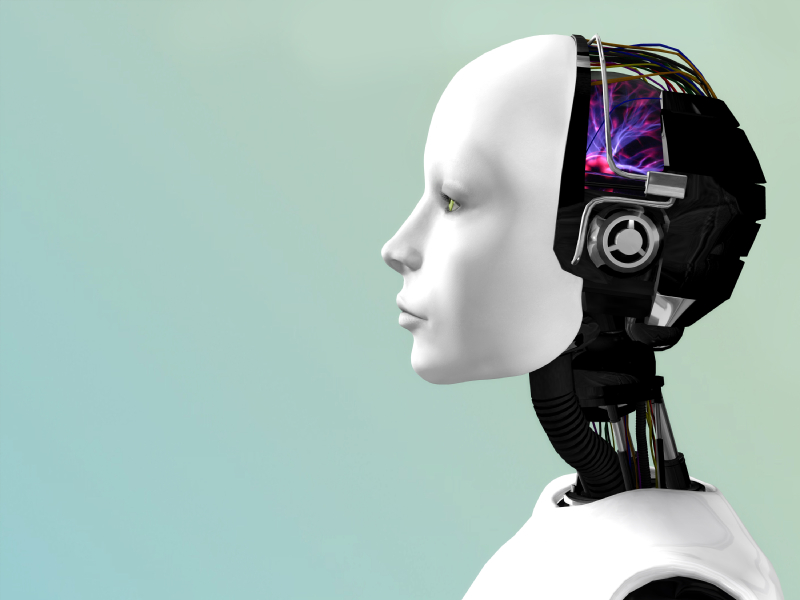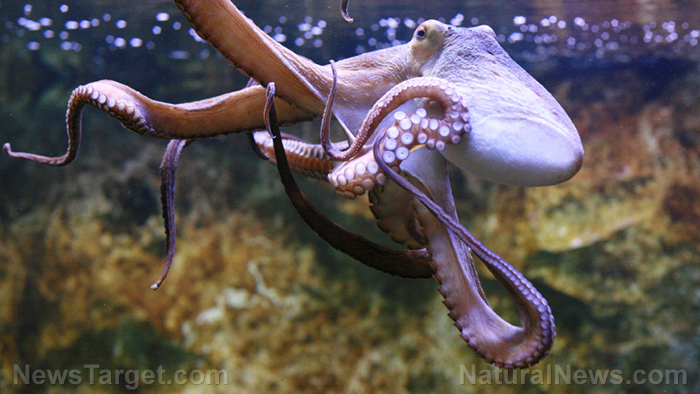First robot TV news anchor takes the desk in Japan in April
02/08/2018 / By Frances Bloomfield

The 23-year-old Erica isn’t just set to become Japan’s most recent news anchor, she’s also poised to become the country’s newest robotic reporter.
Come April, Erica will be replacing a newscaster and will be reading news that was put together by humans. No further details have been given, though her creator and “father”, Dr. Hiroshi Ishiguro, is happy about her new occupation. According to the DailyMail.co.uk, Ishiguro has been trying to get Erica on air for almost four years.
Erica may not be able to move her arms, but her other abilities more than make up for it. For one, she can sit in a chair and read whatever she’s given, all while moving her facial features, neck, and shoulders when need be. Erica can also hold a conversation thanks to the amalgamation of facial-recognition technology, speech-synthesis systems, and infrared sensors that help her track faces.
She’s even learned how to tell jokes. Though in the words of her architect, Dr. Ira Glass, “they’re not exactly side-splitters.”
Ishiguro has described Erica as being so lifelike she could “have a soul.” Ultimately, his goal is to instill her with “independent consciousness.”
In addition to her television gig, Erica will be featured in autonomous vehicles as well, or at least her voice will be. Just like with her up-and-coming job as a newscaster, Ishiguro has remained quite mum on the details for this as well. All that he’s said is that these vehicles will be made by a Japanese automaker whose name begins with the letter “N.”
Although the latest face on Japanese news television, Erica is far from being the first robotic newscaster. That distinction belongs to Kodomoroid and Otonaroid, two female androids who made their debuts in 2014 and were also created by Ishiguro.
Kodomoroid — whose name is a combination of “android” and the Japanese word “kodomo”, meaning “child” — was introduced announcing the news about an earthquake and a raid by the Federal Bureau of Investigation (FBI). Otonaroid — her name coming from “otona”, meaning adult — had a less-grand entrance, fumbling her lines, and apologizing after a reboot. Both robots were seen moving their lips in sync with a voice-over, blinking, and gently swaying their heads. These days, Kodomoroid and Otonaroid work at the National Museum of Emerging Science and Innovation in Tokyo, interacting with visitors and collecting data for Ishiguro.
“This will give us important feedback as we explore the question of what is human,” he told TheStar.com.my. “We want robots to become increasingly clever.” (Related: Taking orders from the cat: Scientists have created an AI cat robot to keep the elderly company and remind them to take their medication.)
Then in 2015, the world got its first live television weather host in Xiaoice. This artificial intelligence (AI) chatbot was developed by Microsoft to interact with Chinese users on social media platforms such as Weibo, and messaging apps like WeChat and Line. Here, she would interact with users and answer their questions on almost any topic. Xiaoice was then presented to viewers of the Chinese program “Morning News” as a trainee anchor. Microsoft has said that Xiaoice is highly capable of reporting the weather on her own. However, the company would rather that she work alongside human news anchors to “bring more bliss to human beings.”
Is this a peek of what the future has in store for humanity? Automation delivering the morning news? If Erica, Kodomoroid, Otonaroid, and Xiaoice are anything to go by, it may very well be the case.
Visit Robotics.news for more news stories on robots and their journey towards becoming uncannily human.
Sources include:
Tagged Under: artificial intelligence, future tech, Journalism, news broadcast, robotics, robots, technology, weird science




















